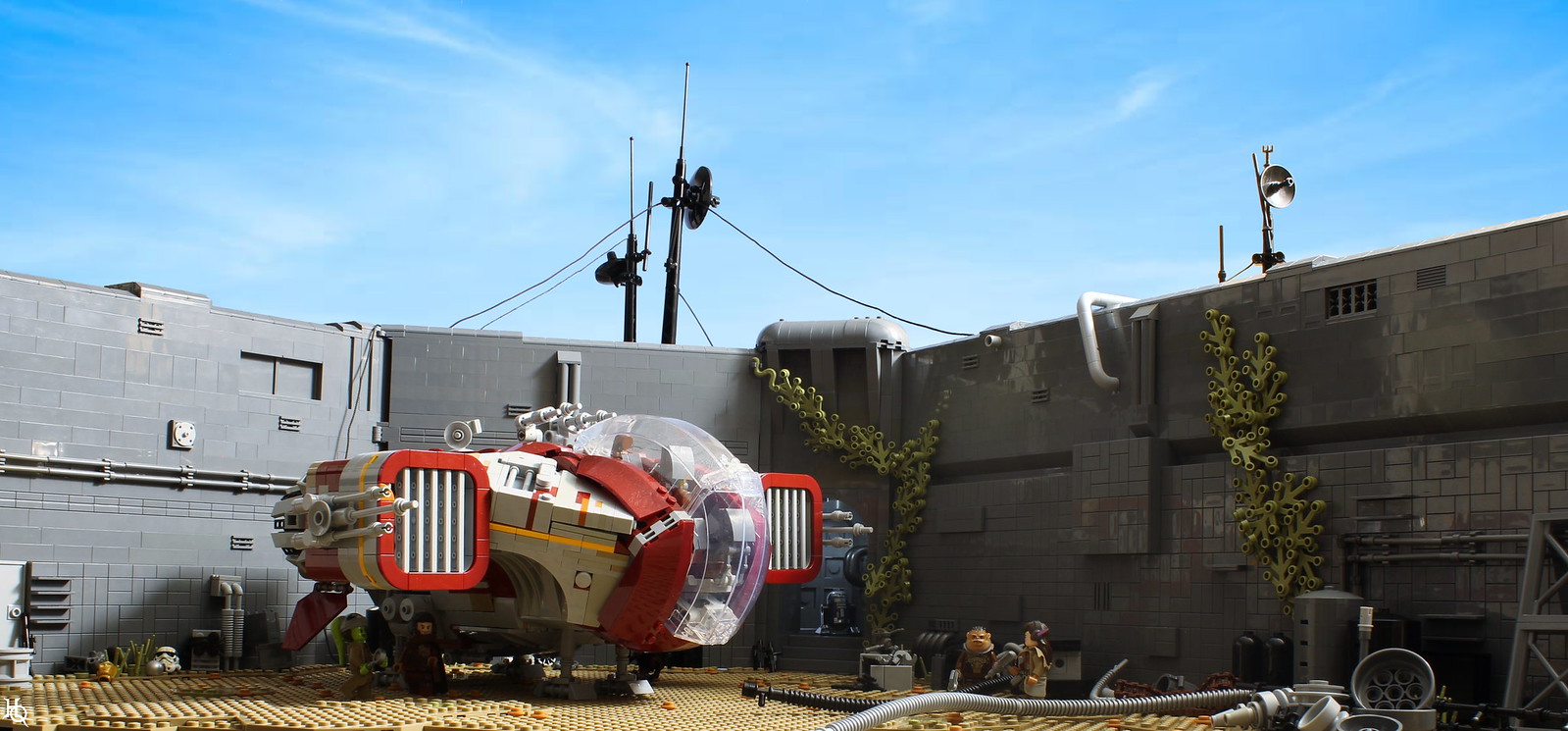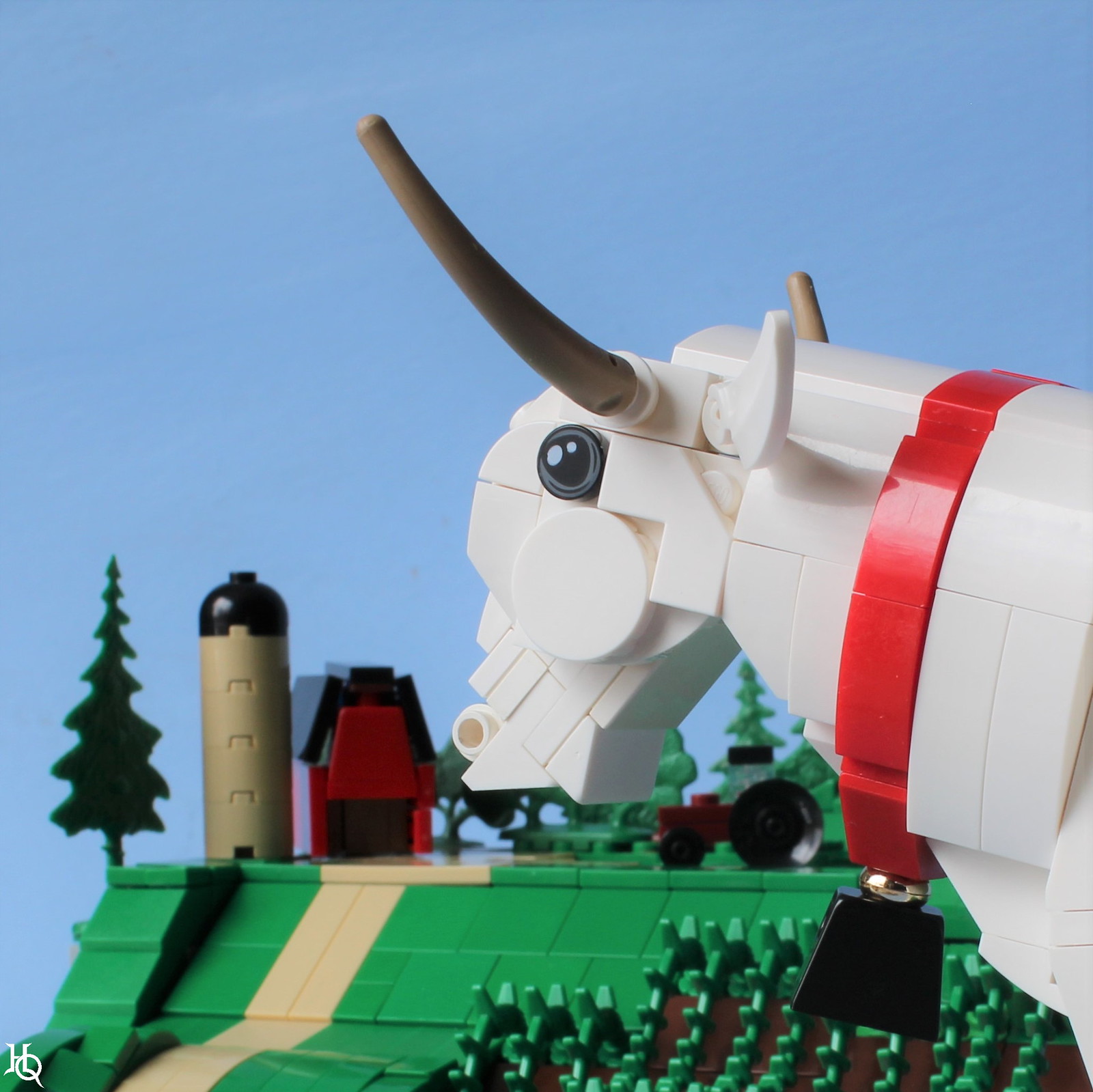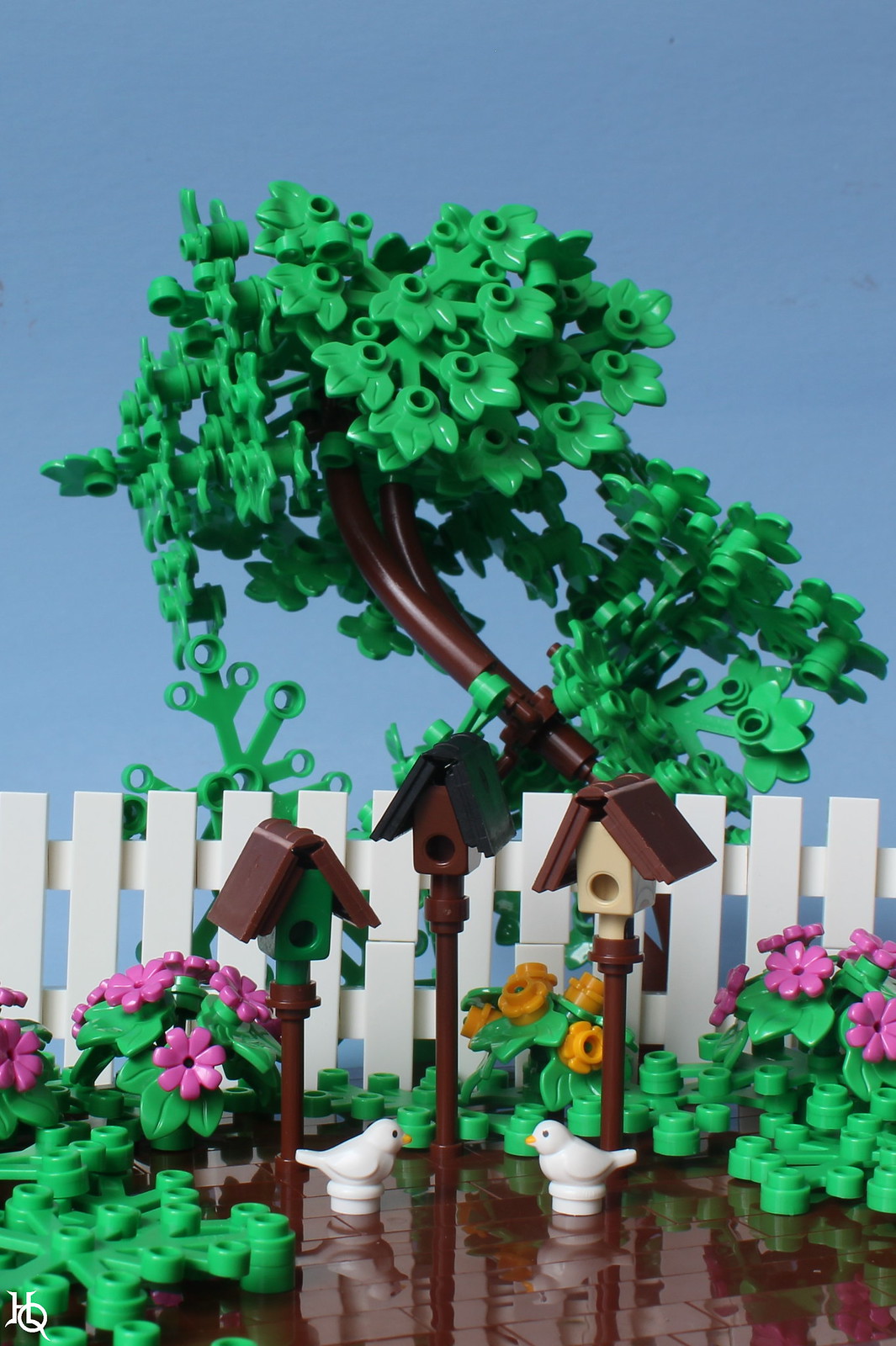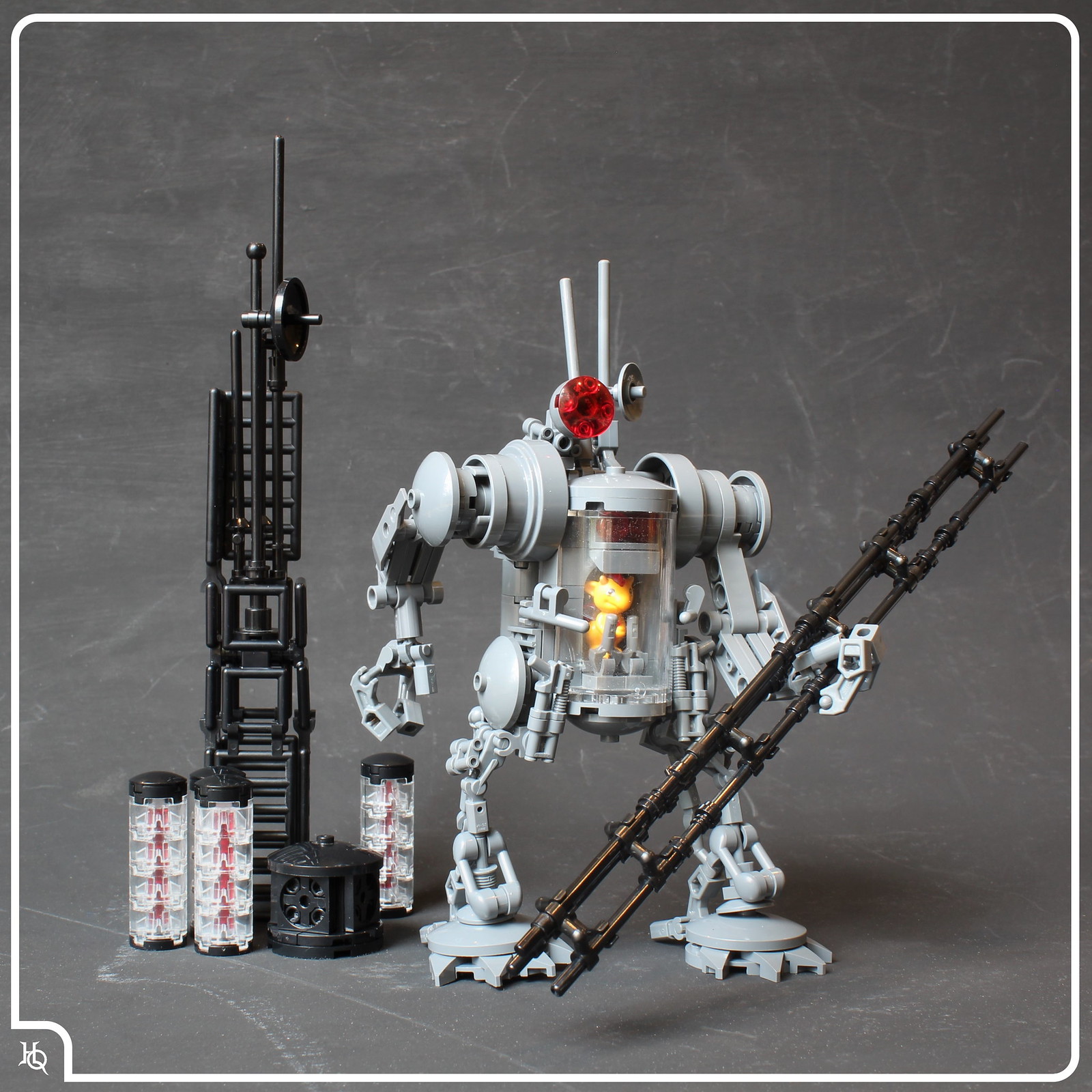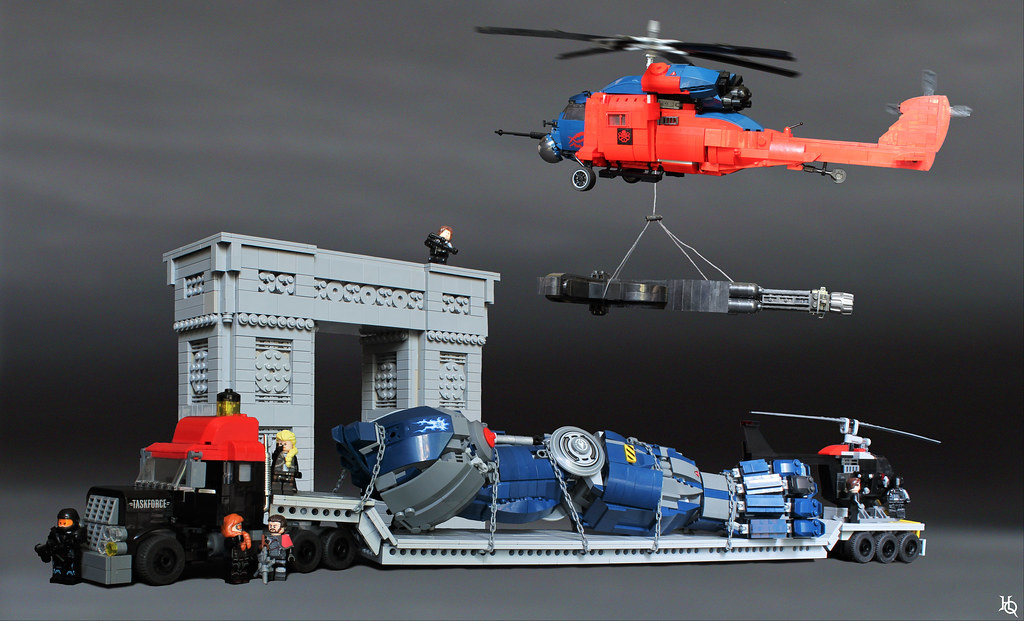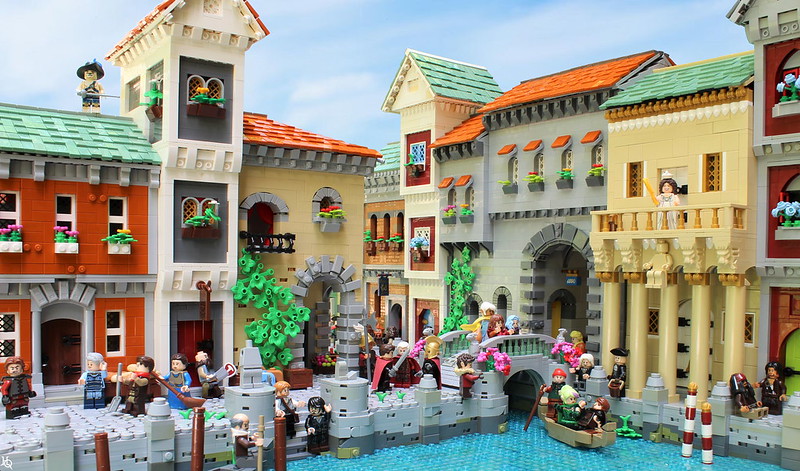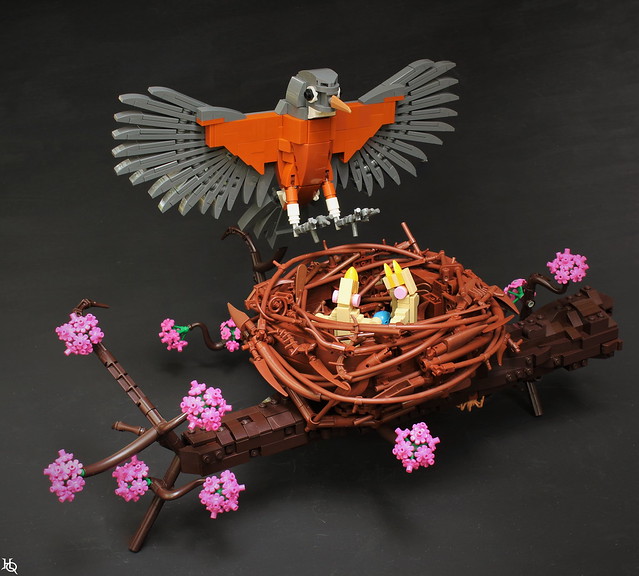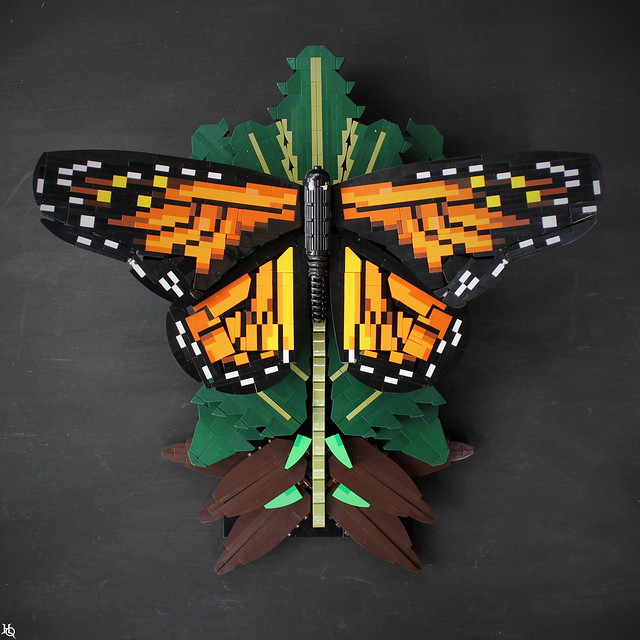The LEGO banana element is not necessarily the most useful piece, right? It has only one connection point, at one end, and no matter what you do with it, it still looks like a banana. That has not stopped LEGO from using it all over the place, whether that be gold bananas in Ninjago sets, grey ones in Mixels, or white, teal, and dark blue from various Chinese festival sets; but it still looks like a banana. But when I was taking my almost-two-year-old to the bathroom the other day, I realized that the handles on the faucet looked remarkably banana-like, with the same curve and general shape. So that got me thinking: could I make a kitchen that used a banana sink? In my own collection, I have only yellow and gold bananas, so it had to be a gold sink, but brass is coming back in, right? Or was it in, and now it’s back out again?
The rest of the kitchen came together around the sink, scaled to that. It’s loosely based off of the kitchens from my last two houses in layout, though the dishwasher should be to the right of the sink for better accuracy. It ended up using almost all my dark brown tiles and bricks and plates (as well as slopes!) for the cabinets, so I’m glad I did not go bigger, and if you look closely at the sand green walls, you’ll see that they are largely made of 1×2 plates. I am not looking forward to taking this one apart. The ceiling came last, but I knew I needed one, since I wanted an immersive shot, and those always look more convincing with the ceiling and a controlled light source. So I made it studded, to replicate the horrible textured ceilings that so many houses have (including my own), and made the light for the photograph come through the ceiling fixture, with a little reflecting in from the window and the banana moon (which would have been better in white, admittedly). I’m fairly pleased with the build, though I do think the floor is ugly, and so does my wife, but that’s the tiles I had in abundance, so that’s what I used. Maybe we’ll remodel it someday.
If you like this build, you’ll probably like this collection of LEGO kitchen builds. And don’t forget to tune in to the Iron Forge competition, where the banana is the seed part.

